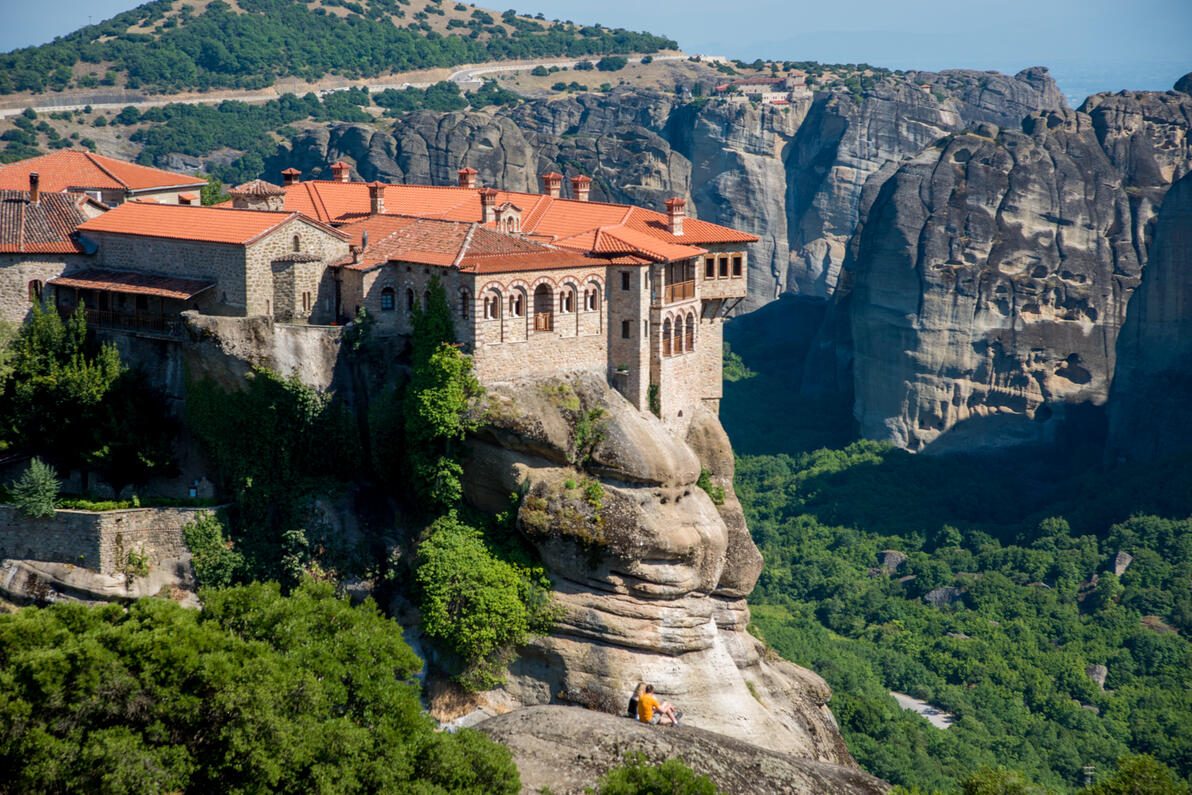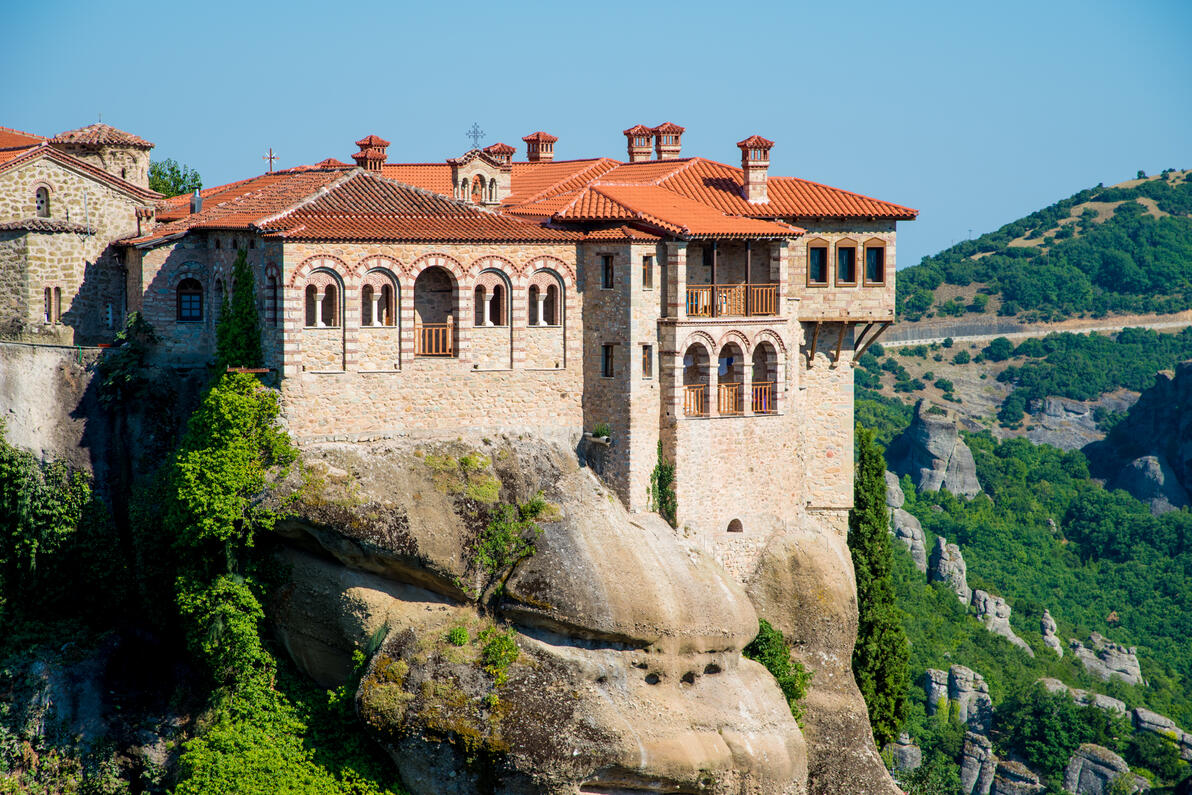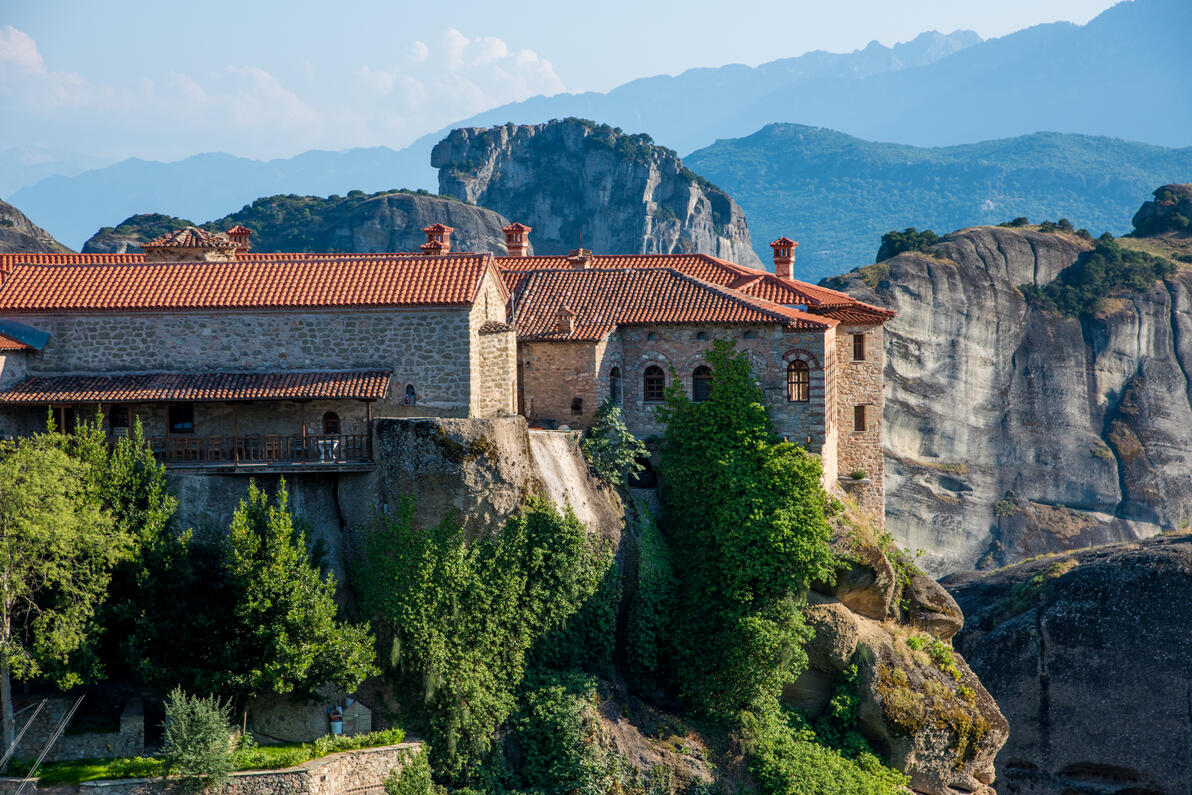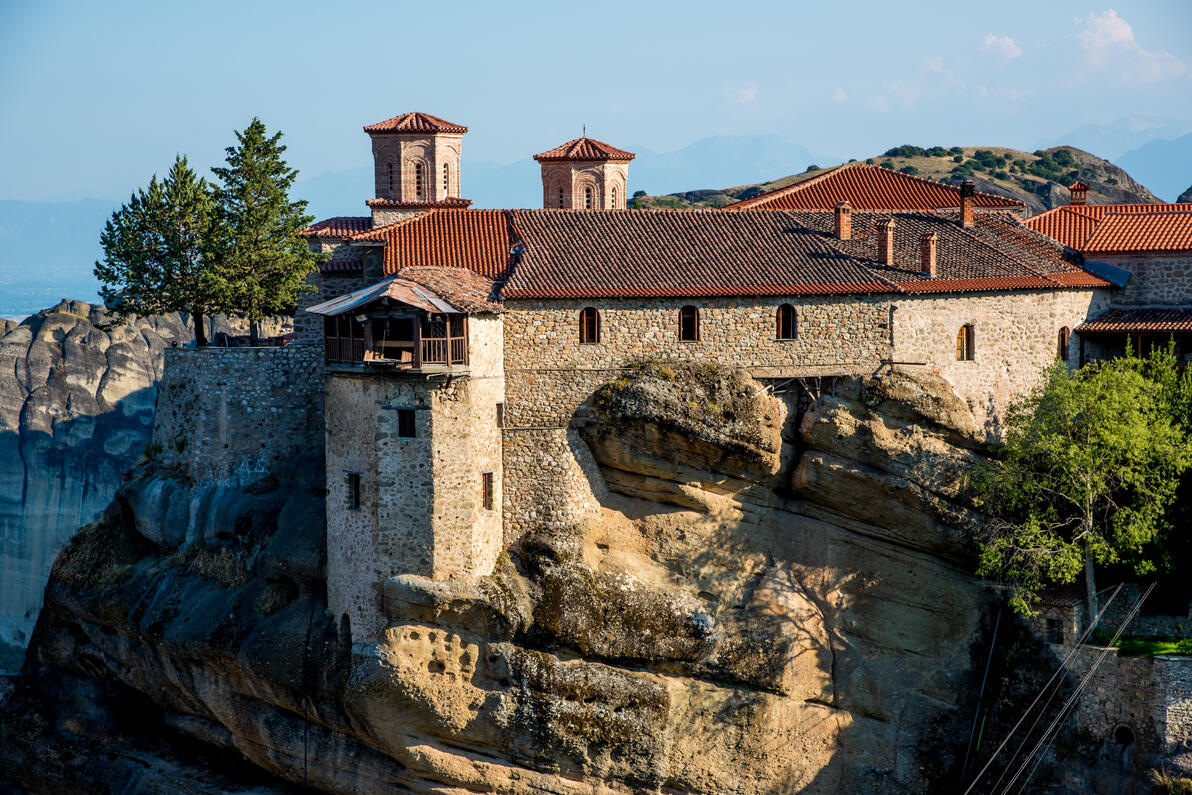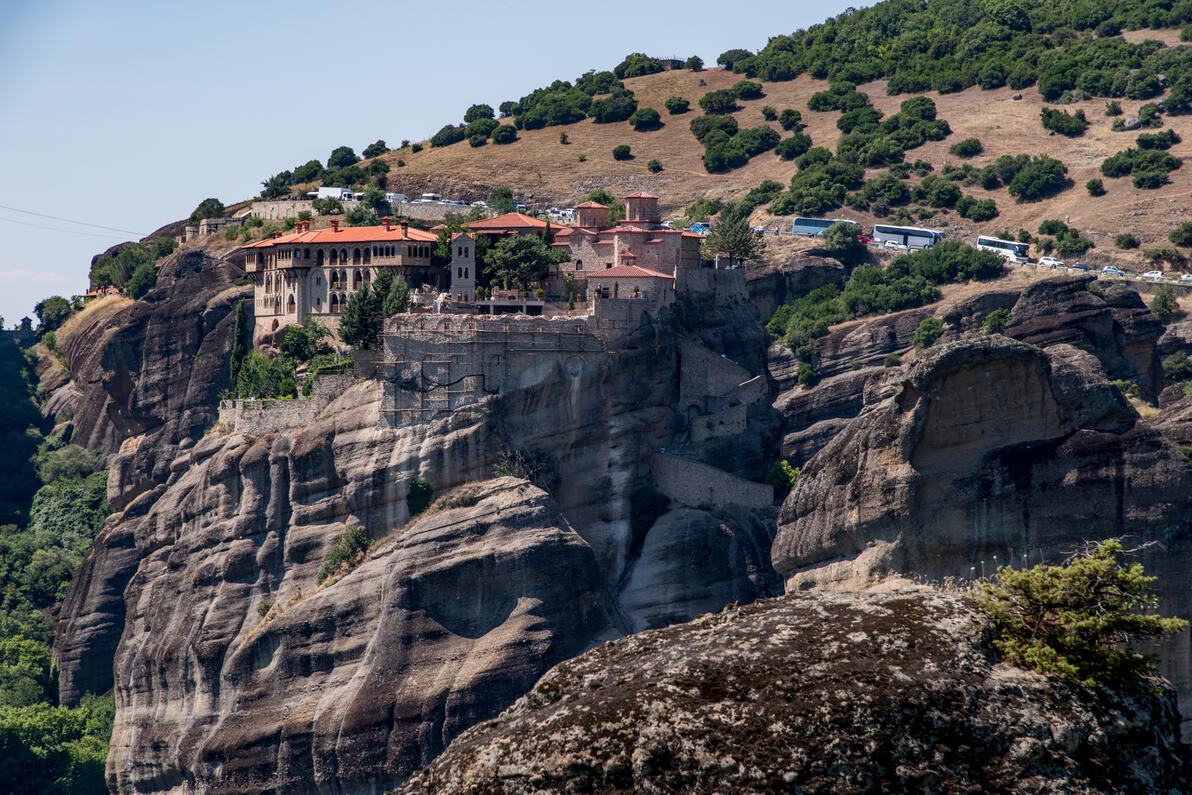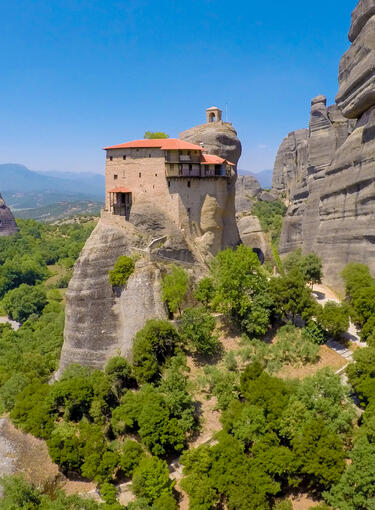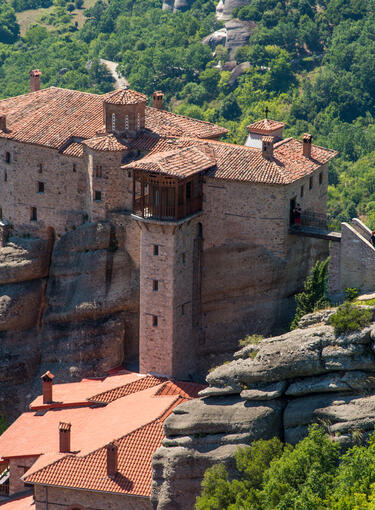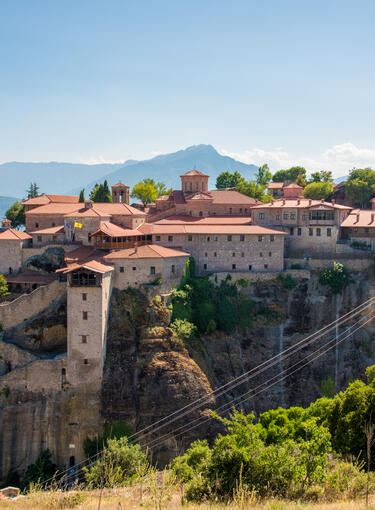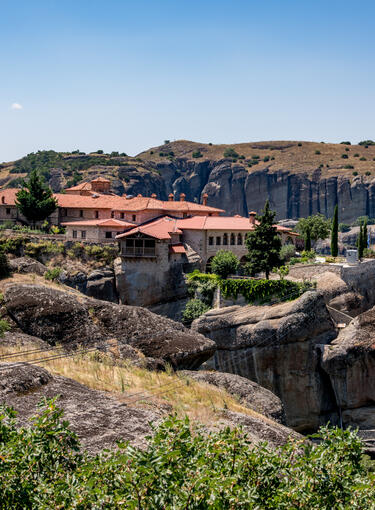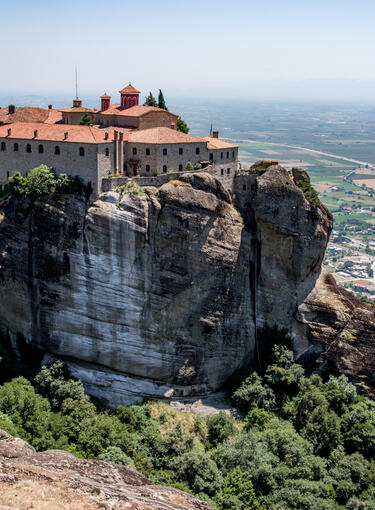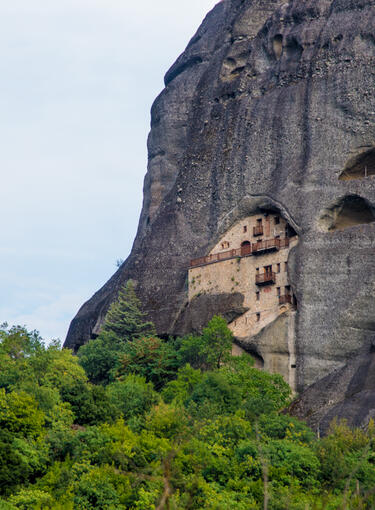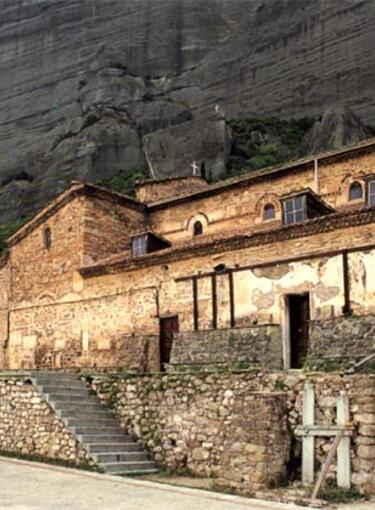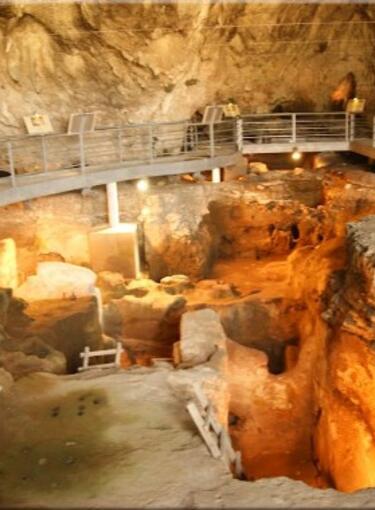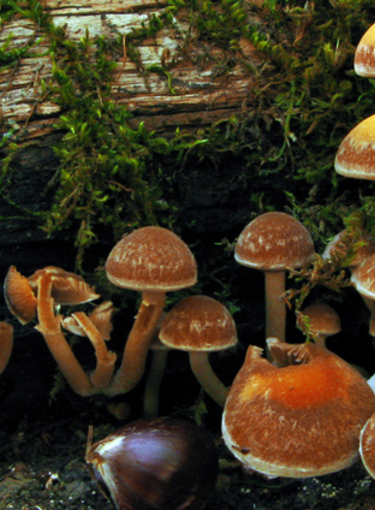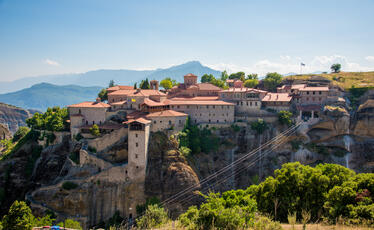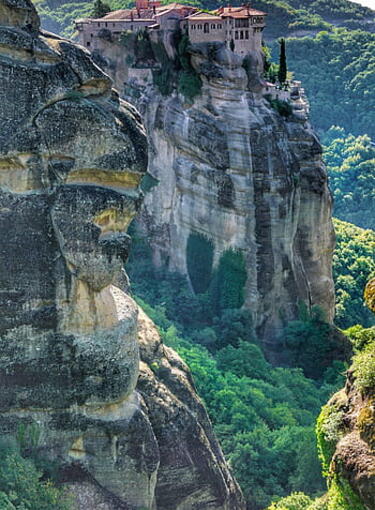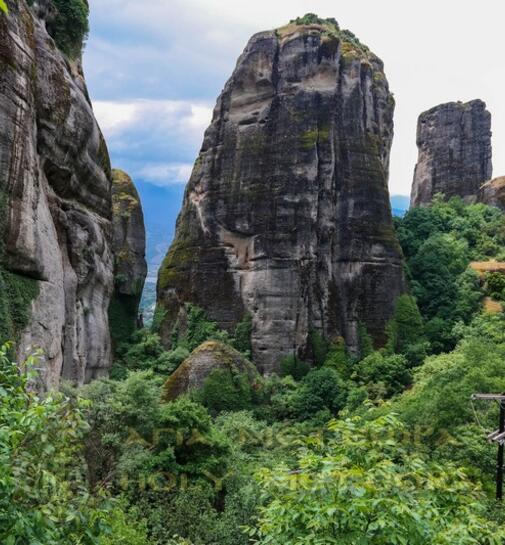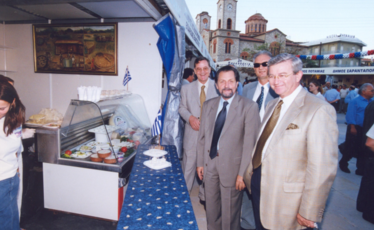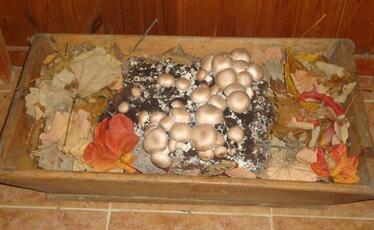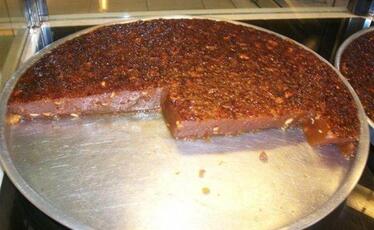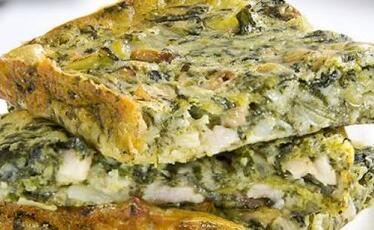Opposite the monastery of the Great Meteoron, on top of the somewhat lower but equally impressive rock, is the Monastery of Varlaam, the second largest in Meteora, dedicated to All Saints.
Its history goes back to the 14th century, when the Varlaam led an ascetic life here, who gave his name to the monastery. Later, in the period 1541-1542, according to the inscriptions and the archives, the priest-monks brother from Ioannina Theofanis and Nektarios Apsarades or Apsarates built in this same location the present day catholicon. The church is a two-columned cross-in-church with a dome and belongs to the so-called “Athonite” trefoil plan. Characteristic of this type is that apart from the eastern semi-circular conch of the altar area there are semi-circular conches on the southern and northern side, which are called “choirs”, because there is the area of the chanters. On the west there is a spacious narthex, the “liti”, as it is called in the monasteries.
At its interior the church is decorated with wall paintings that can be divided into two periods of time. To the first belong the wall paintings of the main church, which according to an inscription they date from 1548. The name of man who created them is not mentioned, but based on their style they are attributed to the so-called “School of Thebes” or of the “Northwestern Greece” and are believed to be the work of the painter from Thebes Frangos Katelanos. To the second period belong the well paintings of the “liti”, which according to an inscription were made in 1566 with the expenses of bishop of Vella of Ioannina, Antonios Apsaras. The painting of the icons of the “liti” was undertaken by the brothers from Thebes, the priest Georgios and Frangos Kontaris. The painting is characterized by the heavily populated scenes and its narrative character. The decoration of the catholicon was renovated in the period 1780-1782 under the expenses of the bishop of Stagon Parthenios, as an inscription that survives at the narthex informs us. No elements of this renovation are evident today and it is possible that just maintenance works to the wall paintings were carried out. The bishop himself funded the erection of an exonarthex which survived until 1857. At this same location they constructed the present day one with the hostel on the upper floor. At the interior of the catholicon is the modern wooden-carved, gold-plated screen.
At the monastery complex, apart from the catholicon, of great interest are other buildings, like the cookery, the hospital and the old refectory, which is used today as a sacristy- museum. The museum hosts manuscripts, old books, icons, religious vestments and ecclesiastical vessels. On the northwestern edge of the rock is the chapel of the Three Hierarchs. It is an aisleless, wooden-roofed church, which, according to an inscription, was constructed in 1627 and its icons were made in 1637 by priest Ioannis, who came from Kalabaka. The church of the Three Hierarchs replaces the chapel, which was built by the ascetic Osios Varlaam and was renovated by the brothers Apsarades.
It is a men’s monastery and it celebrates on the All Saints day.
Informations
Additional
Date:
16th century
Season:
Post-Byzantine
Celebrates:
Ημέρα των Αγίων Πάντων
Holy Metropolis:
Stagi and Meteora
Under the Supervision of:
Ephrorate of Antiquities of Trikala
Schedule:
Winter: 9.00 - 16.00 except Thursday and Friday
Summer: 9.00 - 16.00 except Friday


